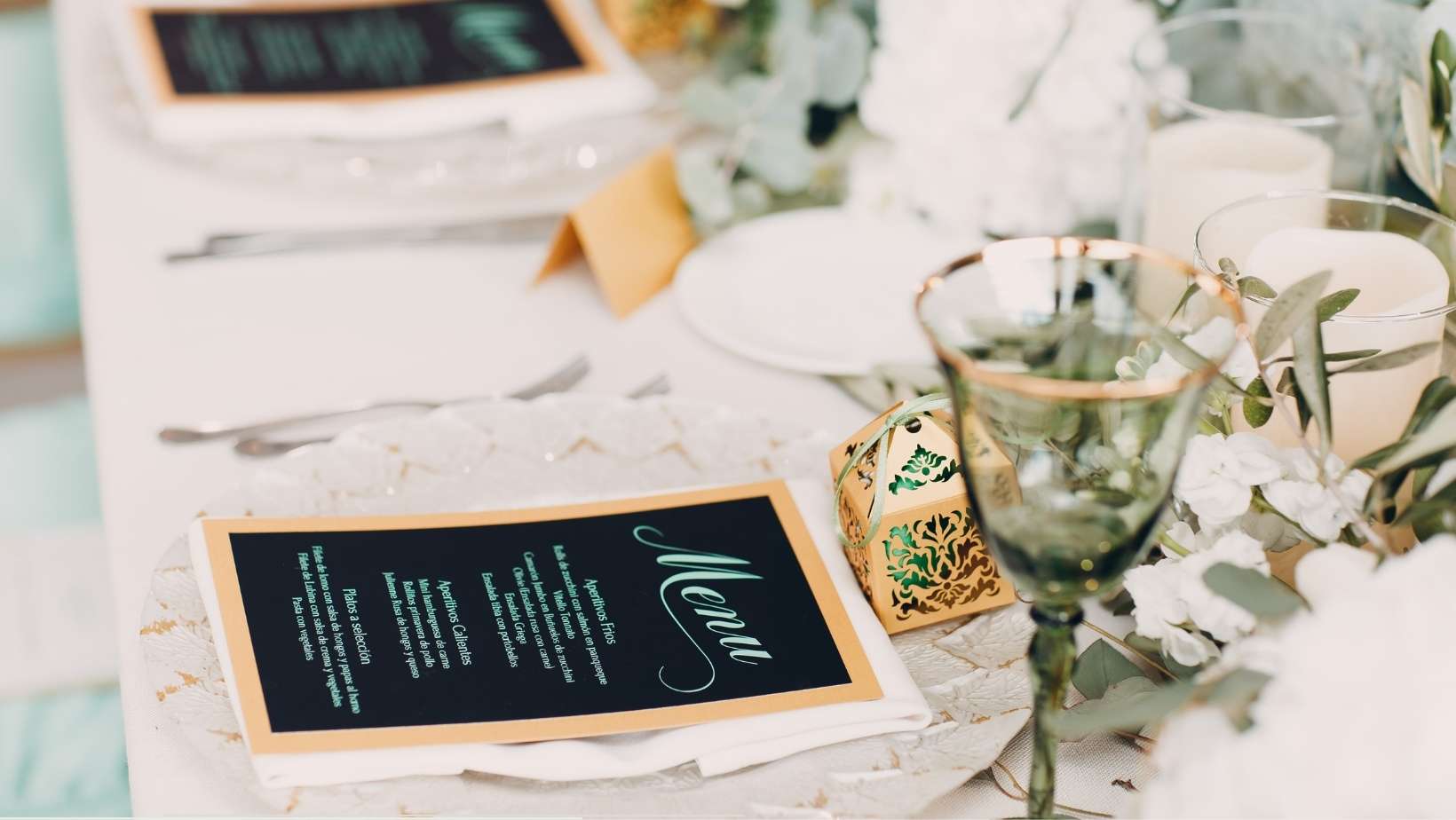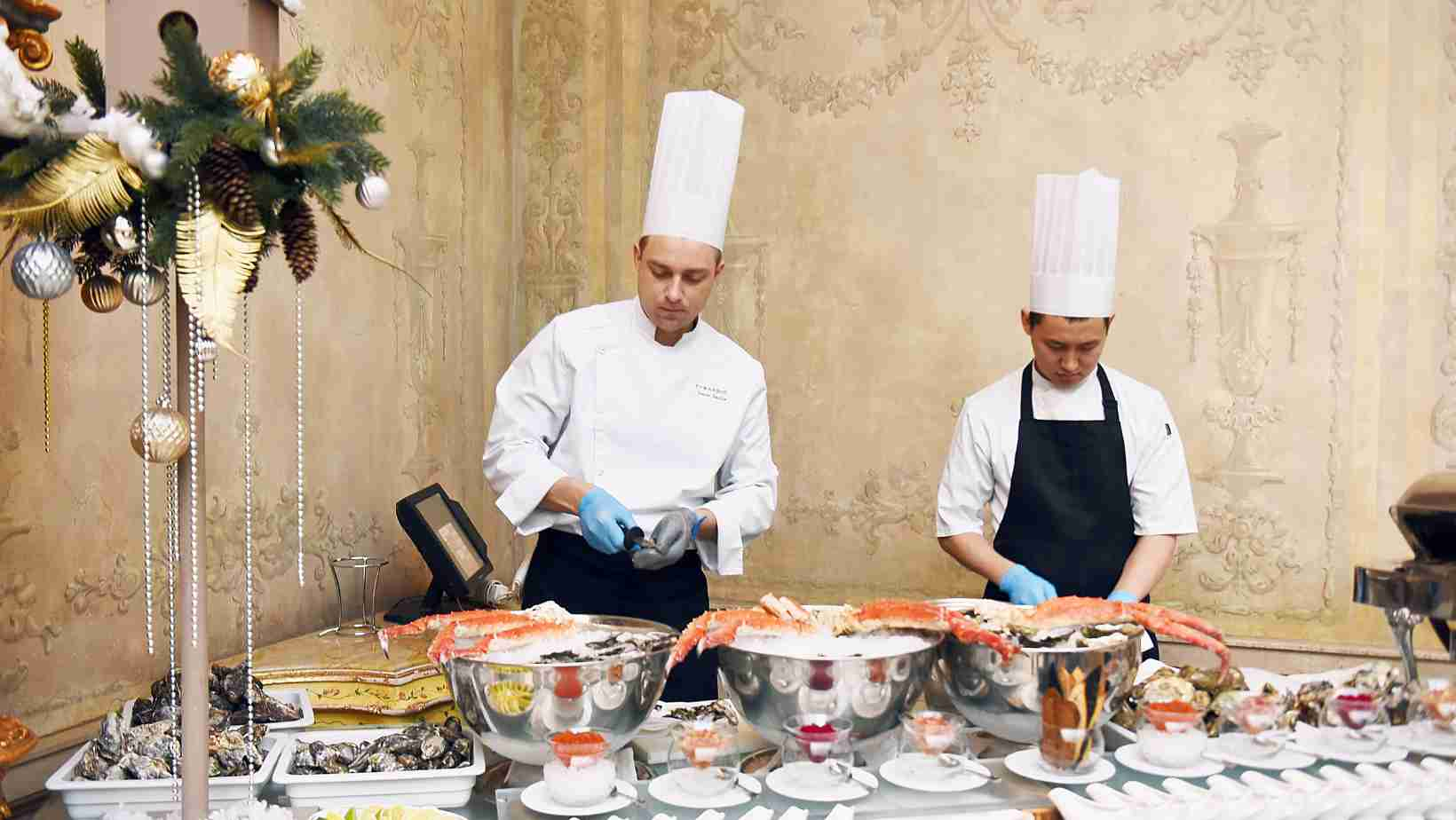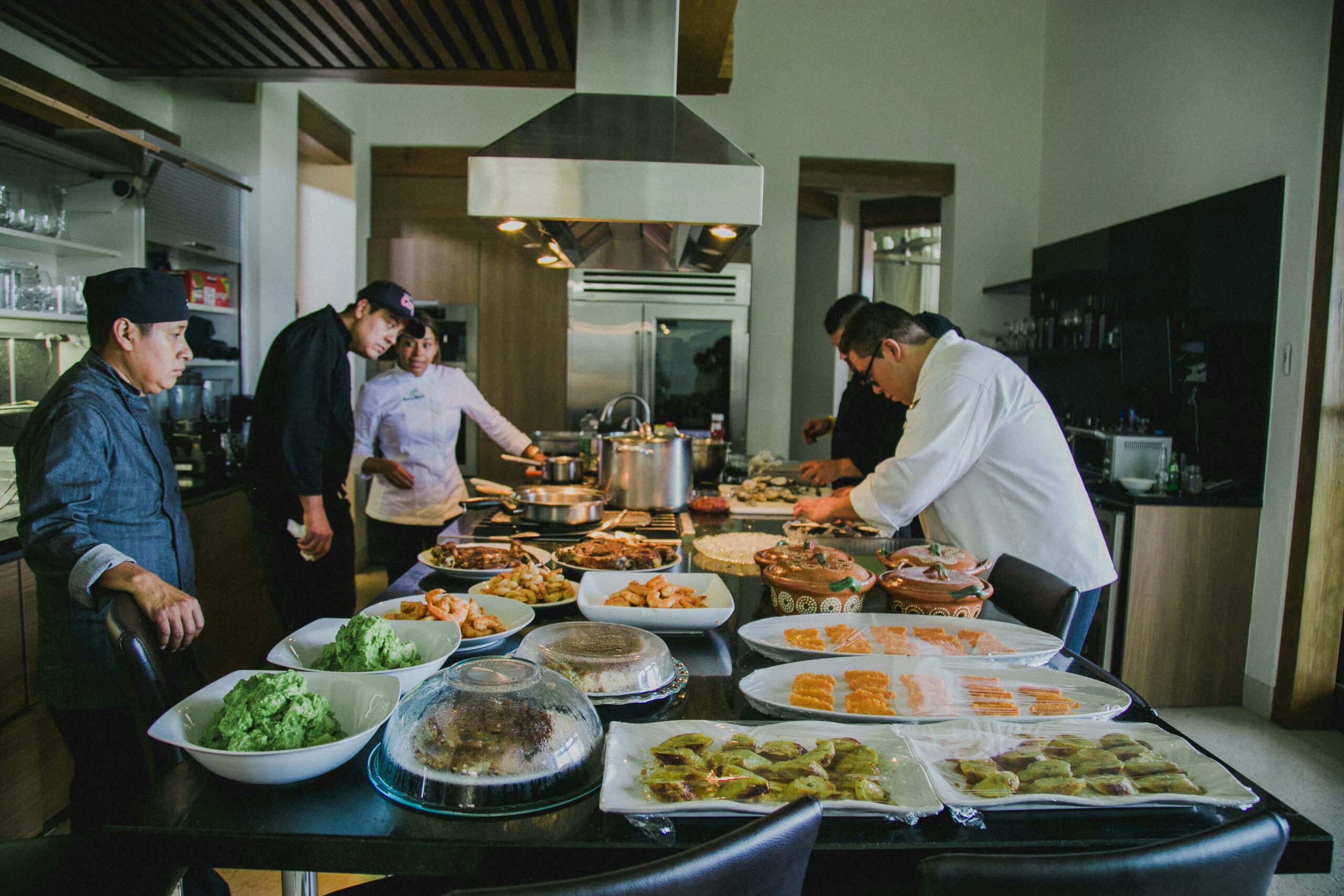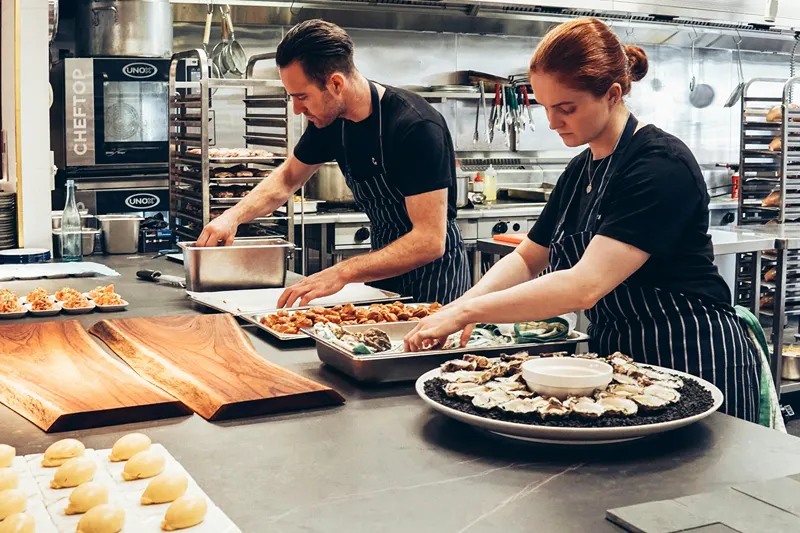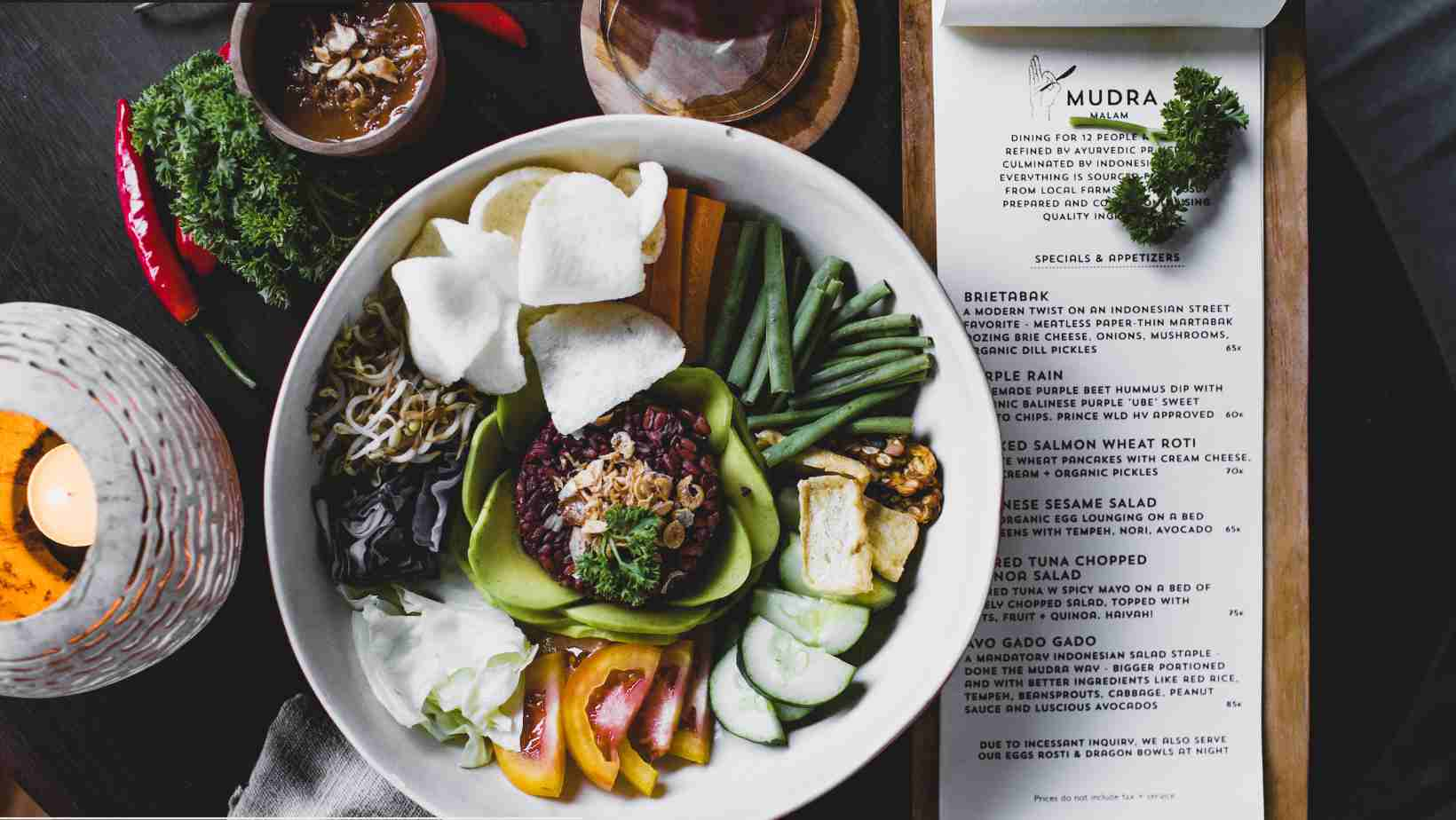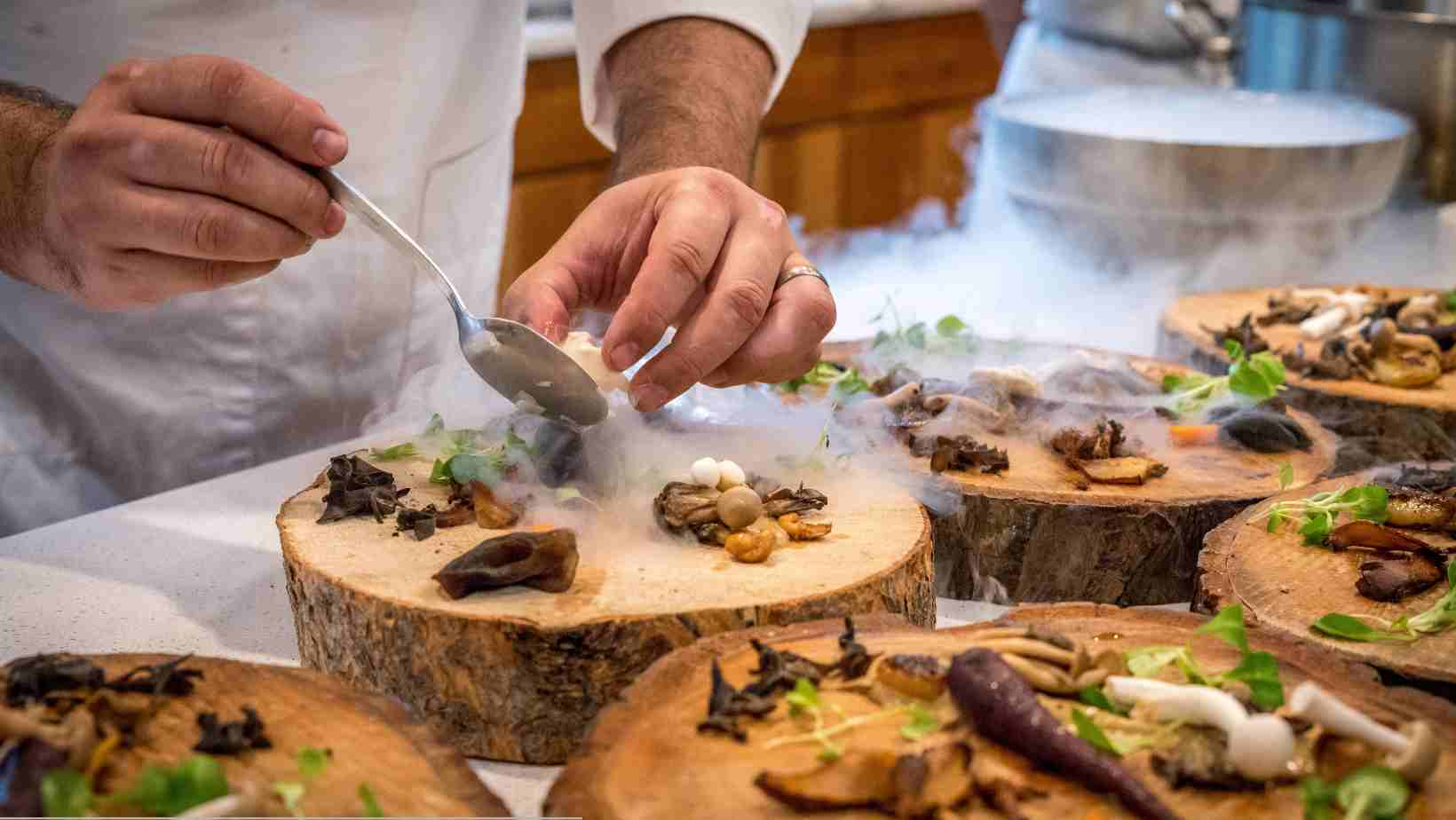7 Creative and Fancy Menu Writing Tips for UK Private Chefs
How to Write a Menu Description: 7 Tips for Excellence
Combine food descriptions and creative writing to design menus that not only sound delicious but also tell a story. By implementing these seven tips, you can leave a lasting impression on diners, ensuring repeat bookings and positive word-of-mouth.
1. Trigger the Senses with Descriptive Food Names

The name of a dish is your first chance to captivate your client’s imagination and appetite. A well-crafted, descriptive name can evoke the dish’s flavours and textures before the diner even reads the full description.
Instead of just Lemon Tart, you can say ‘Zesty Lemon Tart’ or replace Chicken Soup with ‘Rustic Chicken and Herb Broth’. By focusing on sensory words to describe food, you give each dish a distinct identity that sparks curiosity and excitement.
2. Emphasise the Cooking Process
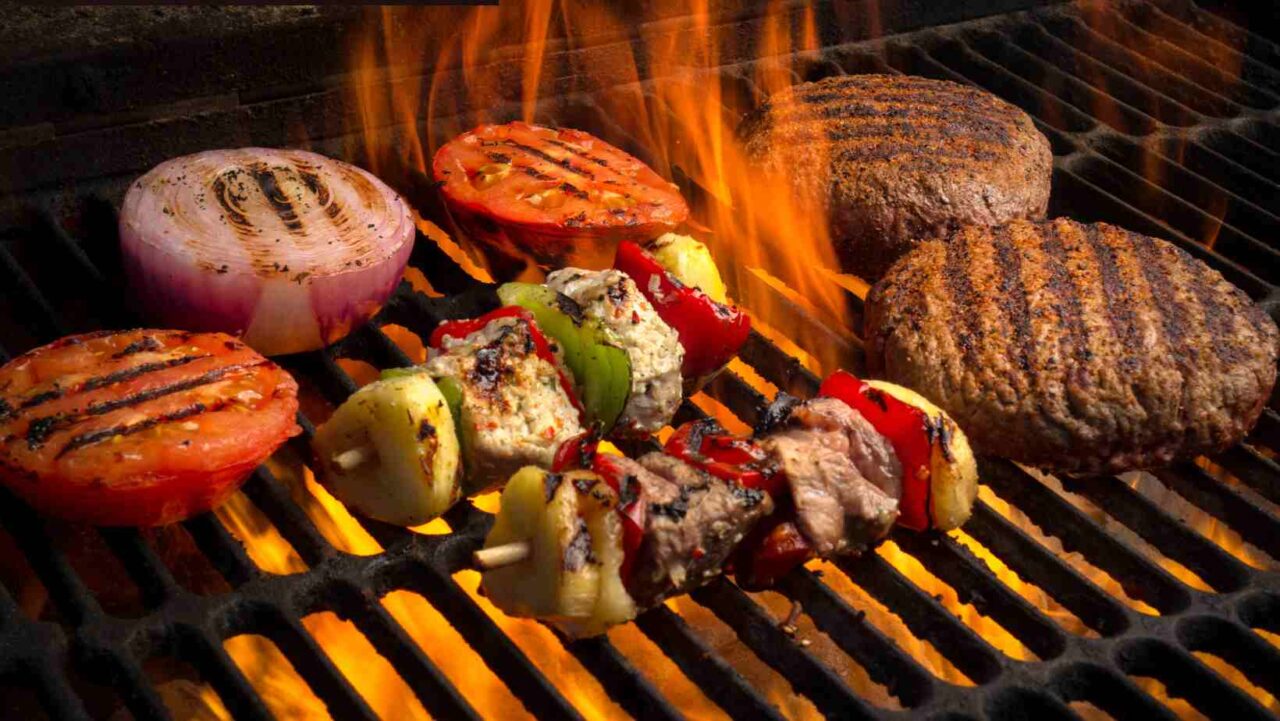
Highlighting the cooking process in your menu names can add a layer of sophistication, giving clients a sense of the care and skill involved in each dish. Whether it’s pan-seared, chargrilled, slow-roasted, marinated, flambeed, poached, or braised, these sensory descriptors for food provide insight into the preparation methods, making your menu more engaging and appealing.
For example, ‘Chargrilled Lamb Chops’ immediately evokes the image of smoky, flame-kissed meat, elevating the dish’s appeal through its preparation method.
3. Use Location to Suggest Quality
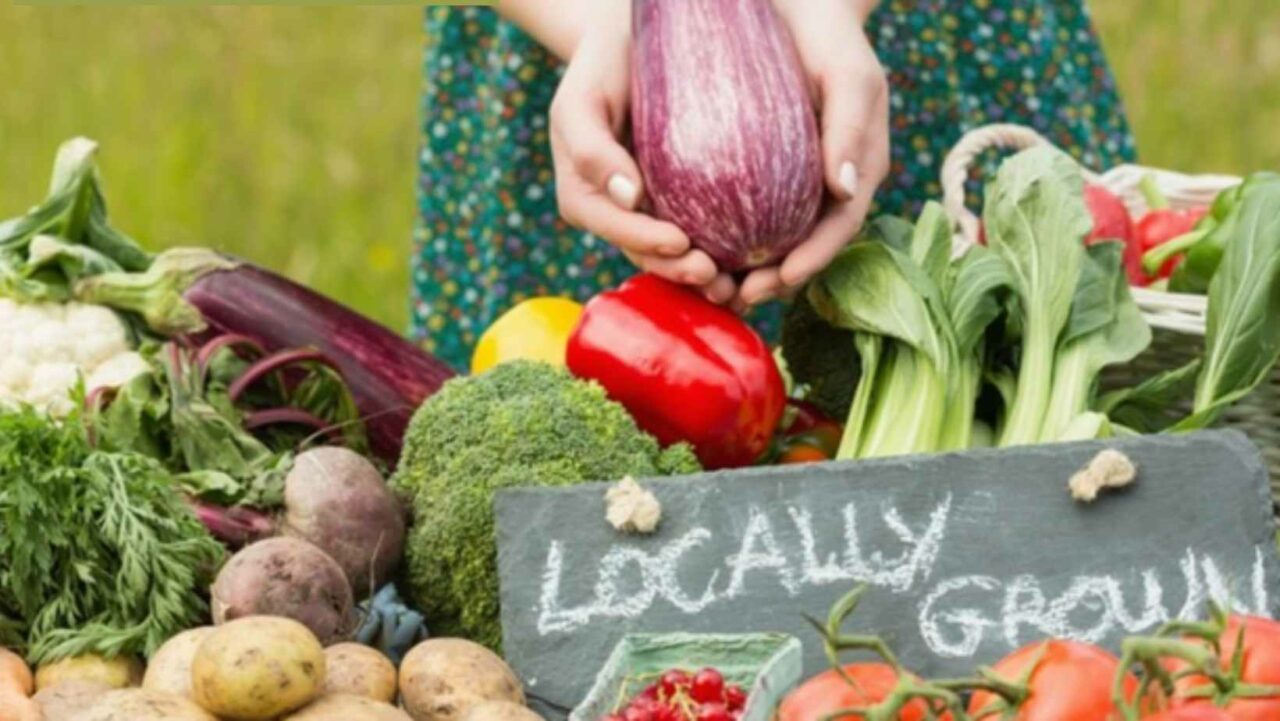
Appeal to the growing trend of appreciating locally sourced food by incorporating geographic origins into your menu. Whether it’s a dish inspired by a specific region or highlighting locally procured ingredients, this strategy enhances the perceived quality and allows customers to connect with the authenticity of your offerings.
For example, you might use ‘Scottish Salmon’, ‘Devonshire Clotted Cream’ or ‘Cornish Sea Salt’, which hints at exclusivity, making the dish sound more luxurious and desirable.
4. Enrich Descriptions with Striking Words
When writing descriptions, the choice of words can significantly enhance the appeal of a dish. Use striking, sensory words to describe food that brings the dish to life and appeals to the imagination.
For example, instead of saying served with red wine sauce, you might describe it as ‘drizzled with a rich, velvety red wine jus.’ or change served with vegetables to ‘paired with a medley of root vegetables’. The goal is to make the description as mouth-watering as possible, encouraging clients to anticipate the flavours and textures of the dish.
5. Create Nostalgic Backstories
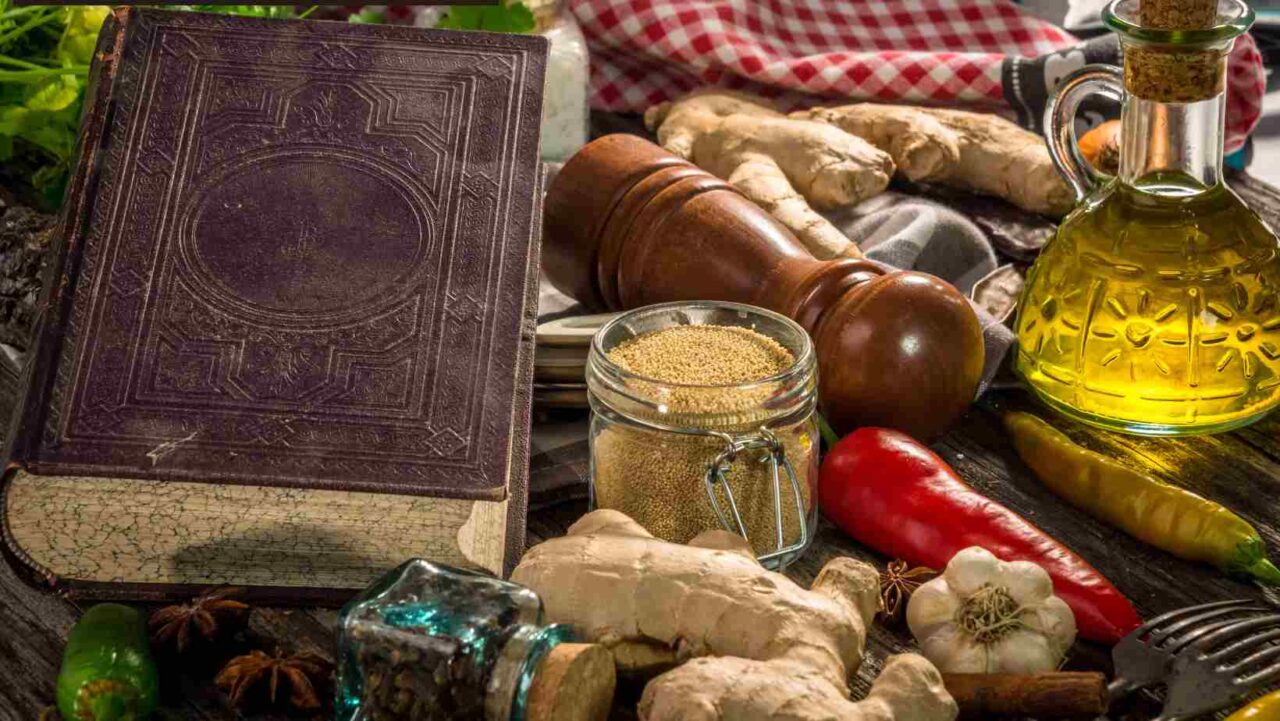
Incorporating nostalgia into your food menu description can help you create a connection with your clients. These could be anything from recipes passed down through generations or originating from distant locales.
For example, instead of simply listing Traditional Sunday Roast Chicken’, you might say, ‘A family favourite inspired by Sunday dinners, this roast chicken is seasoned with a secret blend of herbs, just like Mum used to make.’ This approach highlights the dish’s appeal and evokes warm, comforting memories, making it more inviting and special.
However, keep the number of dishes with a backstory limited to maintain a balanced menu.
6. Inject Humour into Menu Descriptions
Add a touch of humour to your menu with funny and playful descriptions. Clever wordplay and witty names not only entertain but also make your menu memorable.
For example, instead of simply listing ‘Spicy Chicken Wings’, you might say, ‘Hotter Than Your Ex’s Temper—Fiery Chicken Wings’. Instead of ‘Vegetarian Pizza,’ you could say, ‘Herbivore’s Delight—All the greens, none of the guilt.’
These playful descriptions add a fun twist and make your menu description examples more engaging.
7. Personalise with Chef’s Signature
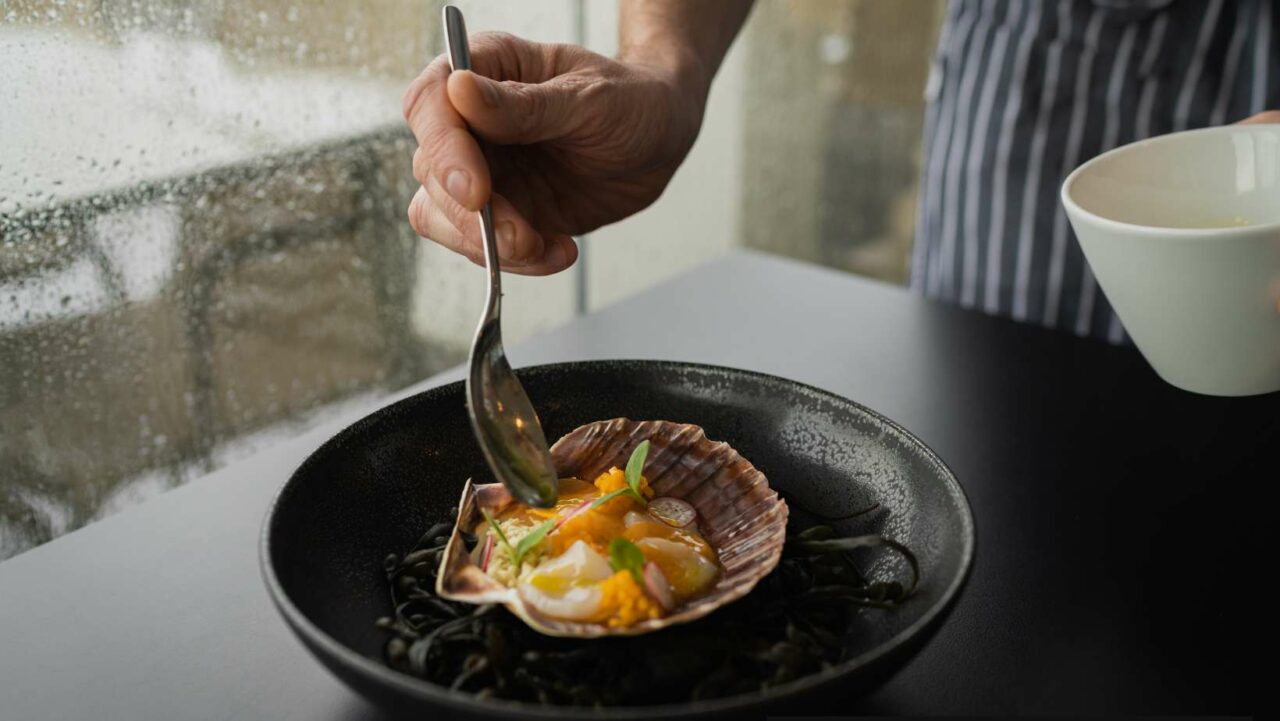
Adding a personal touch can make your menu truly unique and reflective of your style. Include dishes that showcase your signature techniques or ingredients, and let your personality shine through the descriptions.
Whether you're hosting a special celebration dinner, looking for a chef during your holiday or weekly meal prep, we will match you to the perfect chefs.
Start hereFor example, if you’re known for a special twist on a classic dish, you might list it as ‘Chef’s Signature Truffle-Infused Risotto—A luxurious take on a beloved classic.’ Highlighting your expertise with sensory food words adds more appeal to the menu.
Perfecting Your Menus and Expanding Your Reach
Whether you’re evoking the senses with striking words or injecting humour and nostalgia, fancy menu writing and creative descriptions play a crucial role in elevating your menu. Using these tips, you can let your creativity shine on the plate and the page.
If you’re looking to further elevate your menus and private chef business, consider signing up with yhangry. Yhangry can help you showcase your culinary skills and menus, connect with clients, and manage your business efficiently. With support for everything from marketing to client management and insurance coverage, yhangry gives you the tools to focus on what you do best—creating exceptional dining experiences.
- What is a fancy word for a set menu?
-
A fancy term for a set menu is the prix fixe menu, which is French for a fixed price and typically refers to a multi-course meal offered at a set price. Another term is a tasting menu, which often features a curated selection of smaller portions of various dishes, allowing diners to experience a variety of flavours and techniques.
- What is the term for luxury food?
-
The term for luxury food is gourmet. Gourmet refers to high-quality, expertly prepared food made with the finest ingredients. It involves meticulous preparation and presentation of food, often seen in fine dining establishments. A great way to enjoy gourmet food at your choice of venue is by hiring private chefs from platforms like yhangry.
- What are some fancy words to describe food?
-
A few examples of fancy words to describe food include velvety, which conveys a smooth, rich texture, and succulent, used for juicy, tender meats. Aromatic describes a strong, pleasant smell, while delectable means extremely delicious. These words are also known as sensory descriptors for food.
